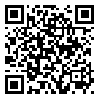Volume 4, Issue 15 (2011)
LCQ 2011, 4(15): 88-111 |
Back to browse issues page
Download citation:
BibTeX | RIS | EndNote | Medlars | ProCite | Reference Manager | RefWorks
Send citation to:



BibTeX | RIS | EndNote | Medlars | ProCite | Reference Manager | RefWorks
Send citation to:
Emārati Moghadam D. Rhetorical Approach to Genre. LCQ 2011; 4 (15) :88-111
URL: http://lcq.modares.ac.ir/article-29-3231-en.html
URL: http://lcq.modares.ac.ir/article-29-3231-en.html
Ph.D. Student of Persian, Ferdowsi University of Mashhad
Abstract: (5365 Views)
This article studies the role of “Rhetorical Situation” in the formation of genres. Accordingly, the article discusses the concept of genre in rhetoric which includes a variety of fields ranging from the ancient oratory to the communication studies in 20th century. Unlike literary approaches which define genre mostly on the basis of textual features (form and content), rhetorical approach defines genre according to the extra-textual features such as situation and audience. Before 20th century, the concept of “situation” was very much static and limited to some specific and clear-cut situations and the speaker and audience only had to passively respond to these situations. In 20th century, the theories of Bakhtin and Carolin Miller turned this concept into a dynamic one. According to these theorists, a genre comes to existence in a communicative process and with the participation of speaker and audience. This article first addresses the theories of genre in ancient rhetoric, and then goes on to show that the definition of genre as social action makes genre a tool for production and reproduction of social values and ideological assumptions in different cultures. Finally, the article mentions some of the consequences of rhetorical approach for literary studies.
Article Type: Theoretical |
Subject:
literary genre
Received: 2012/04/6 | Accepted: 2012/04/6 | Published: 2012/04/6
Received: 2012/04/6 | Accepted: 2012/04/6 | Published: 2012/04/6
| Rights and permissions | |
 |
This work is licensed under a Creative Commons Attribution-NonCommercial 4.0 International License. |








